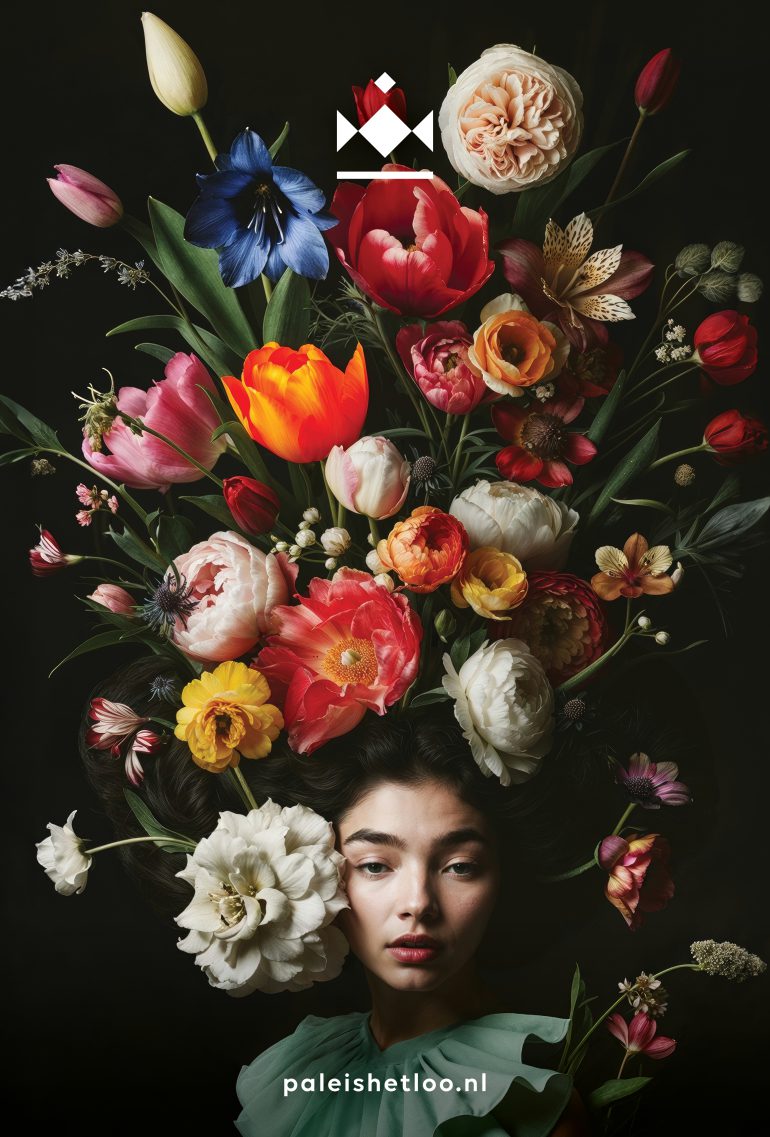For centuries, flowers have brought colour, fragrance and context to Paleis Het Loo. The exhibition ‘Bloom’ – on show from 20 April to 1 September – focuses on 17th-century still lifes and Princess Mary’s influence on the use of flowers. Contemporary artists, designers and the palace team of gardeners bring this history to life. Though they admire the historical artworks, they also have critical questions. How did these flowers come to be here? Who paid the price for all this wealth and beauty? And what is the future of flowers? There’s a story behind every flower and every work of art.
Tulip Mania
In the 17th century striped tulips were especially popular. Princess Mary loved these tulips and used them in the gardens and rooms of Paleis Het Loo. What started as a love of tulips grew into an obsession. Dutch traders paid a fortune for a single tulip bulb. The exhibition will include a special loan: Pieter Cos’s tulip book from 1637. In the same space, Jos Agasi will bring Pieter Cos’s book to life with his video installation and matching music.
The plant collection of Willem and Mary
One unique exhibit, returning to the Netherlands for the first time, is the water colour collection of Stephanus Cosijns, 1685-1688, from the collection of Bibliotheca Nazionale Centrale in Florence. It depicts a part of the plant collection owned by politician Gaspar Fagel, a close friend of Willem and Mary. They inherited the plants and the 97 watercolours after Fagel’s death. Thanks to these images, we still know today which plants grew in the gardens of Paleis Het Loo.
Contemporary artists
Flower artist Hanneke Frankema has created a floral artwork using dried flowers from the gardens and flower room of Paleis Het Loo. Mirjam Verschoor, known as ‘tribecalledtrash’, creates floral artworks with a reference to sustainability. She photographs street litter and digitally adds it to an image, replacing flowers with waste in her still lifes, as a warning of how our society damages nature. The exhibition will also feature couture pieces by fashion designer Claes Iversen, known for his commissions for the royal family. Iversen is fascinated by old techniques, such as embroidery, and puts his own spin on these techniques in his creations. The publicity materials for the exhibition were designed by Noëlle van Dijk, a multidisciplinary artist and experimental designer. Just as in 17th-century artworks, Noëlle creates images that are not possible in reality.
